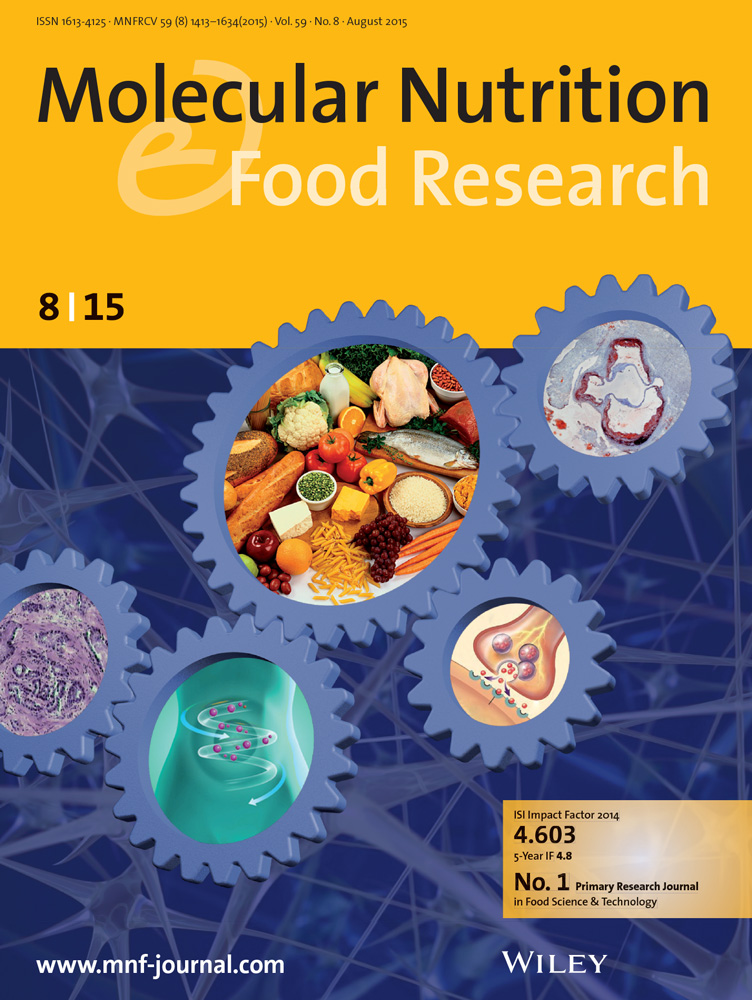Saucerneol在体外抑制骨肉瘤细胞的生长、迁移和侵袭,并防止转移相关的骨溶解。
IF 4.2
2区 农林科学
Q1 FOOD SCIENCE & TECHNOLOGY
引用次数: 0
摘要
中国龙骨传统上被用来治疗各种疾病。从五味子中分离得到的生物活性化合物具有多种药理活性。本研究采用离体和离体实验模型,研究了从中国山楂空气部分中提取的木脂素皂苷(sauerneol, Sauc)的抗骨肉瘤作用。以三叶草甲醇提取物为原料,纯化三叶草挥发油。它对MG63和SJSA-1细胞(人骨肉瘤细胞系)具有毒性,诱导细胞凋亡形态学改变,抑制细胞迁移。酱油触发PARP裂解,降低抗凋亡蛋白的表达。它还破坏了线粒体膜电位,增加了活性氧(ROS)的产生。蛋白质组分析、western blotting和免疫细胞化学显示,Sauc抑制JAK2/STAT3通路。此外,Sauc下调转移相关蛋白的表达,抑制通过细胞外基质包被膜的侵袭,抑制不依赖于锚定的细胞生长。在离体骨器官培养中,Sauc减轻了肿瘤诱导的骨溶解。本研究表明,sac在体外通过诱导细胞凋亡、抑制细胞迁移和侵袭以及减轻转移相关的骨降解来发挥抗骨肉瘤的作用。因此,豆油有望作为一种保护化合物在日常保健补充剂和治疗剂对人类骨肉瘤。本文章由计算机程序翻译,如有差异,请以英文原文为准。
Saucerneol Inhibits the Growth, Migration, and Invasion of Osteosarcoma Cells In Vitro and Prevents Metastasis-Associated Osteolysis Ex Vivo.
Saururus chinensis has traditionally been used to treat various diseases. Biologically active compounds isolated from S. chinensis exhibit diverse pharmacological activities. The aim of this study was to investigate the antiosteosarcoma effects of saucerneol (Sauc), a lignan, purified from the aerial parts of S. chinensis using in vitro and ex vivo experimental models. Sauc was purified from the methanolic extract of S. chinensis. It exhibited toxicity against MG63 and SJSA-1 cells (human osteosarcoma cell lines), inducing apoptotic morphological changes and suppressing cell migration. Sauc triggered PARP cleavage and decreased the expression of antiapoptotic proteins. It also disrupted mitochondrial membrane potential and increased reactive oxygen species (ROS) generation. Proteome profiling, western blotting, and immunocytochemistry revealed that Sauc inhibited the JAK2/STAT3 pathway. Furthermore, Sauc downregulated the expression of metastasis-associated proteins, suppressed invasion through extracellular matrix-coated membranes, and inhibited anchorage-independent cell growth. In an ex vivo bone organ culture, Sauc attenuated tumor-induced osteolysis. This study demonstrated that Sauc exerts anti-osteosarcoma effects by inducing apoptosis, inhibiting cell migration and invasion in vitro, and mitigating metastasis-associated bone degradation ex vivo. Thus, Sauc holds promise as a protective compound in daily health supplements and a therapeutic agent against human osteosarcoma.
求助全文
通过发布文献求助,成功后即可免费获取论文全文。
去求助
来源期刊

Molecular Nutrition & Food Research
工程技术-食品科技
CiteScore
8.70
自引率
1.90%
发文量
250
审稿时长
1.7 months
期刊介绍:
Molecular Nutrition & Food Research is a primary research journal devoted to health, safety and all aspects of molecular nutrition such as nutritional biochemistry, nutrigenomics and metabolomics aiming to link the information arising from related disciplines:
Bioactivity: Nutritional and medical effects of food constituents including bioavailability and kinetics.
Immunology: Understanding the interactions of food and the immune system.
Microbiology: Food spoilage, food pathogens, chemical and physical approaches of fermented foods and novel microbial processes.
Chemistry: Isolation and analysis of bioactive food ingredients while considering environmental aspects.
 求助内容:
求助内容: 应助结果提醒方式:
应助结果提醒方式:


